Birds in Art
Writer John Zeaman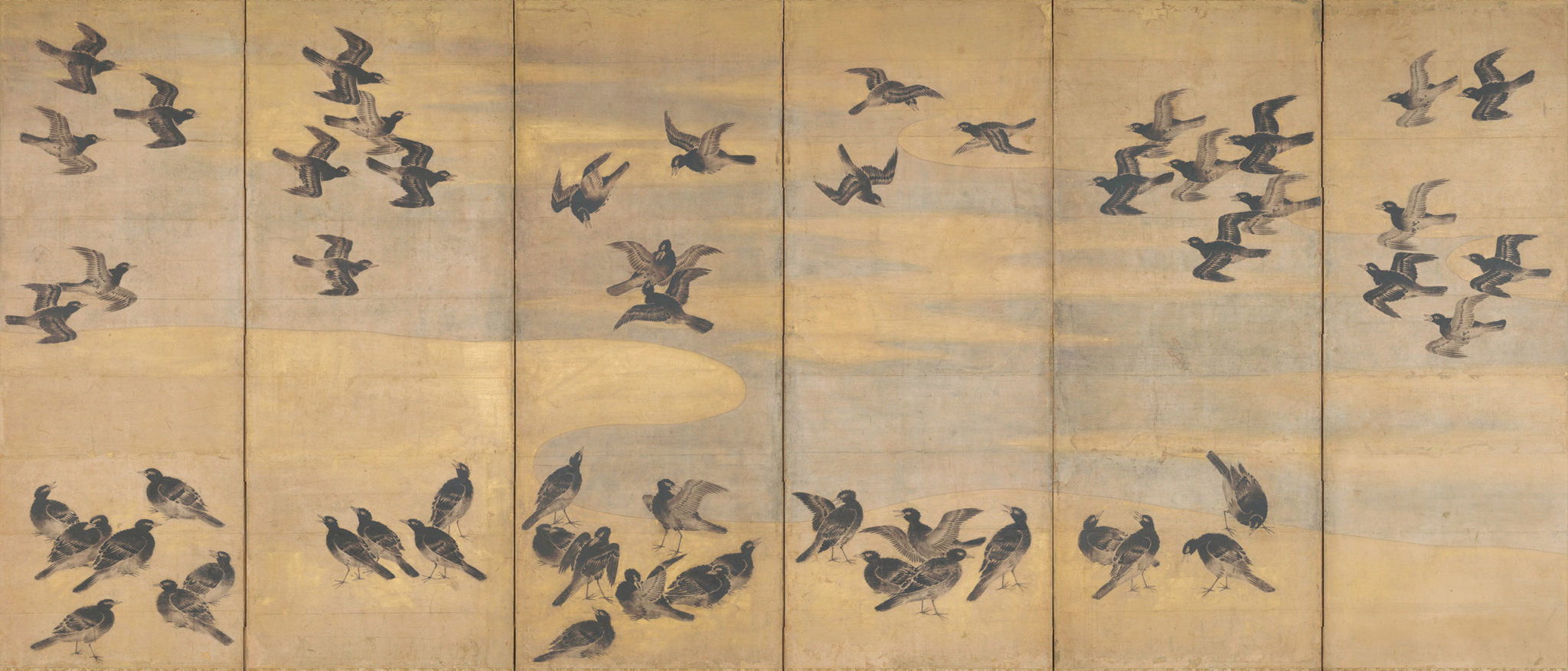
Birds fill the sky and the ground in the elegant six-panel folding screen Mynah Birds by an anonymous Japanese artist from the early 17th century.
Early artists document an avian world that has some members that are now in decline
Artists love birds. Leonardo studied their flight, Picasso used the dove as a symbol of peace, Brancusi abstracted birds into aerodynamic shapes and Audubon meticulously rendered them in his famous The Birds of America.
This all comes to mind following a report in the journal Science that since 1970, North America has lost about 30 percent of its most commonplace birds. That’s 3 billion fewer sparrows, finches, swallows, warblers, juncos, woodpeckers and others—the ones you typically see at your backyard feeder. The culprit is no secret—it’s us. Scientists point to habitat loss, pesticides and other specific environmental causes, but it all boils down to human population growth. During that same 50-year period that birds lost 30 percent of their numbers, the U.S. population grew by 37 percent.
Not to say that declines are inevitable. Humans have shown they can reverse these trends in some cases. Wetland birds, such as ducks and geese, have increased in number, primarily because of conservation efforts that protected wetland habitats over the past few decades. (Much of that conservation was driven by hunters, who wanted to maintain healthy populations.) And raptors such as bald eagles, ospreys and peregrine falcons have also improved their numbers since the 1970s, following a ban of the pesticide DDT. The title of the pioneering book that led to that ban, Silent Spring, evoked the potential loss of bird voices as a call to action.
Consider this column, then, an advertisement for birds. The illustrations come from the pages of art history and works of natural history. The artists who created them lived in simpler times. None of them, it is assumed, could have imagined a world from which so many birds would be disappearing.
John Jay Audubon’s works are full of testimonies to the sheer abundance of some birds. In the 1830s, he wrote of the red-headed woodpecker: “It is impossible to form any estimate of the number of these birds seen in the United States during the summer months; but this much I may safely assert, that a hundred have been shot upon a single cherry-tree in one day.” No one is shooting them out of cherry trees today, but since 1970, the population of red-headed woodpeckers has declined more than 60 percent.
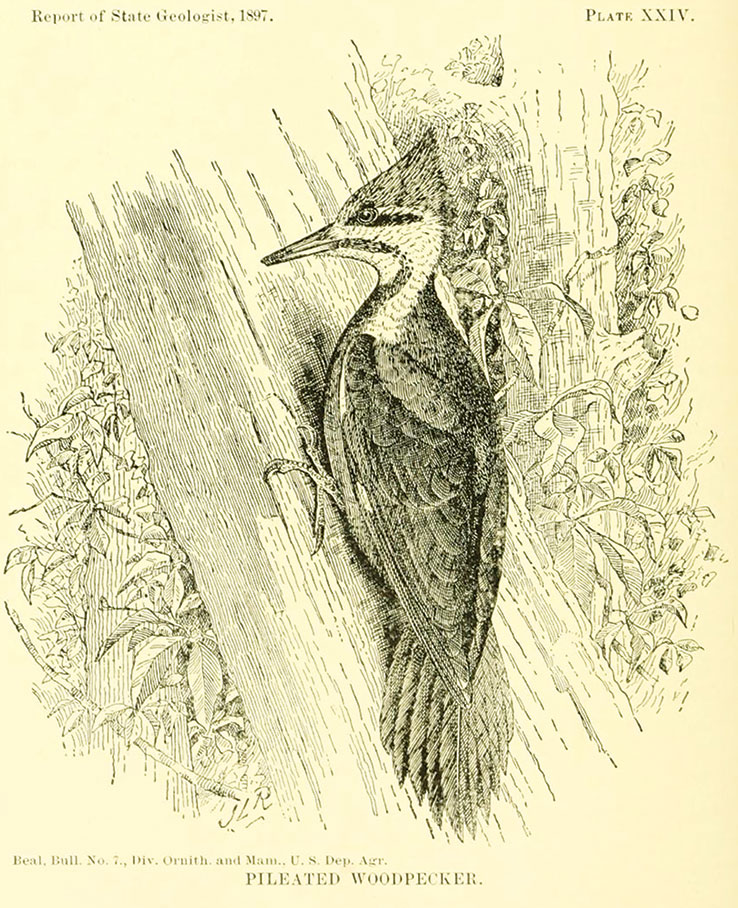
The pileated woodpecker, shown here in a print from an 1897 geologist’s report.
The pileated woodpecker shown here in a print from an 1897 geologist’s report, is the largest woodpecker in the U.S. Its flaming crest and noisy call made it the model for the popular cartoon character Woody the Woodpecker. It has also been more fortunate than its cousin, the red-headed woodpecker. Its numbers have increased since 1970.
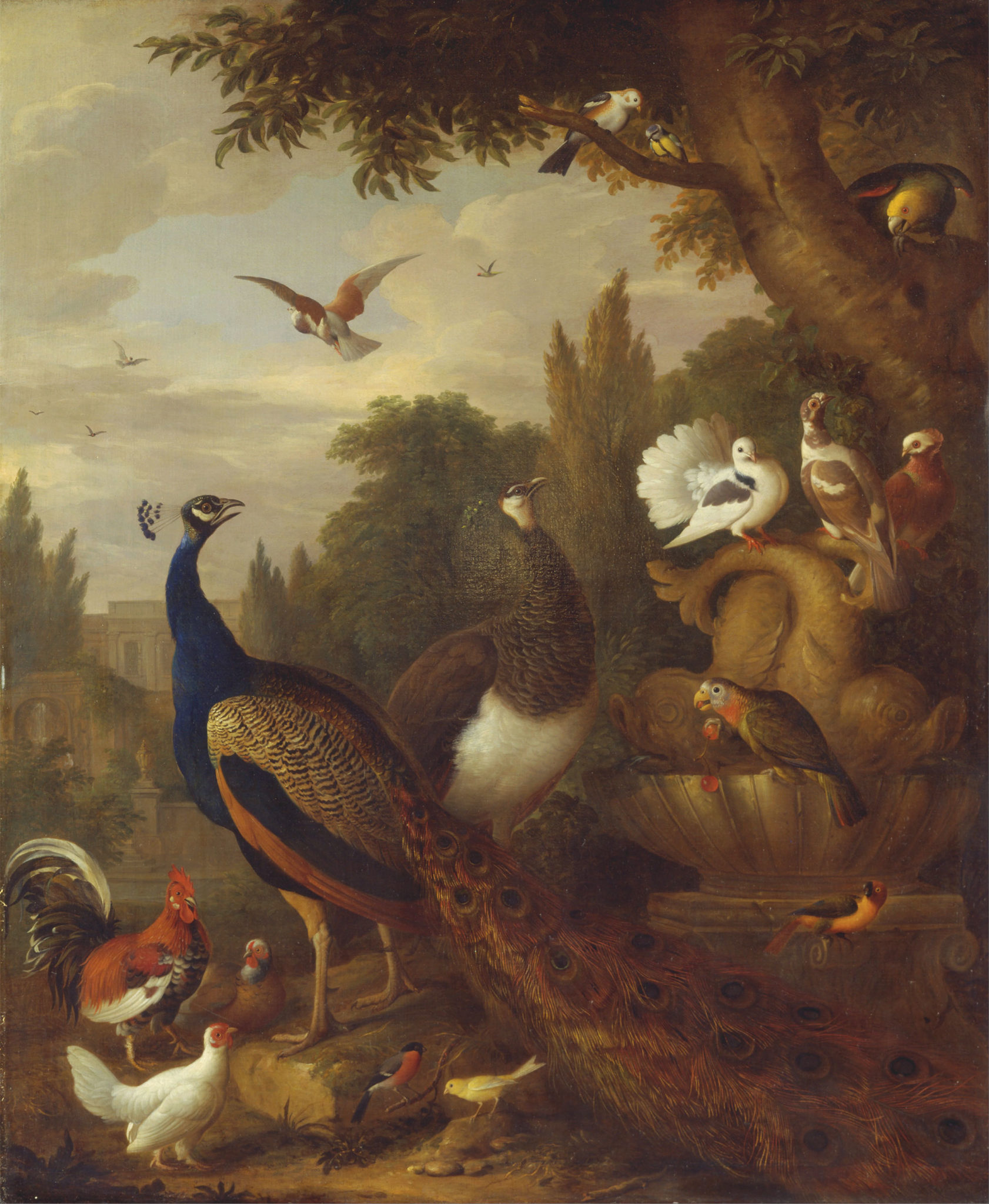
Peacock, Peahen, Parrots, Canary, and Other Birds in a Park by Hungarian-British artist Jacob Bogdani illustrates the diversity of the sizes and shapes of birds.
Birds come in an amazing diversity of sizes and shapes. The Hungarian-British artist Jacob Bogdani, who worked in the 1700s, captured this in his paintings of exotic birds crowded into landscapes. In Peacock, Peahen, Parrots, Canary, and Other Birds in a Park, the varied birds look as if they are politely posing for a group picture.
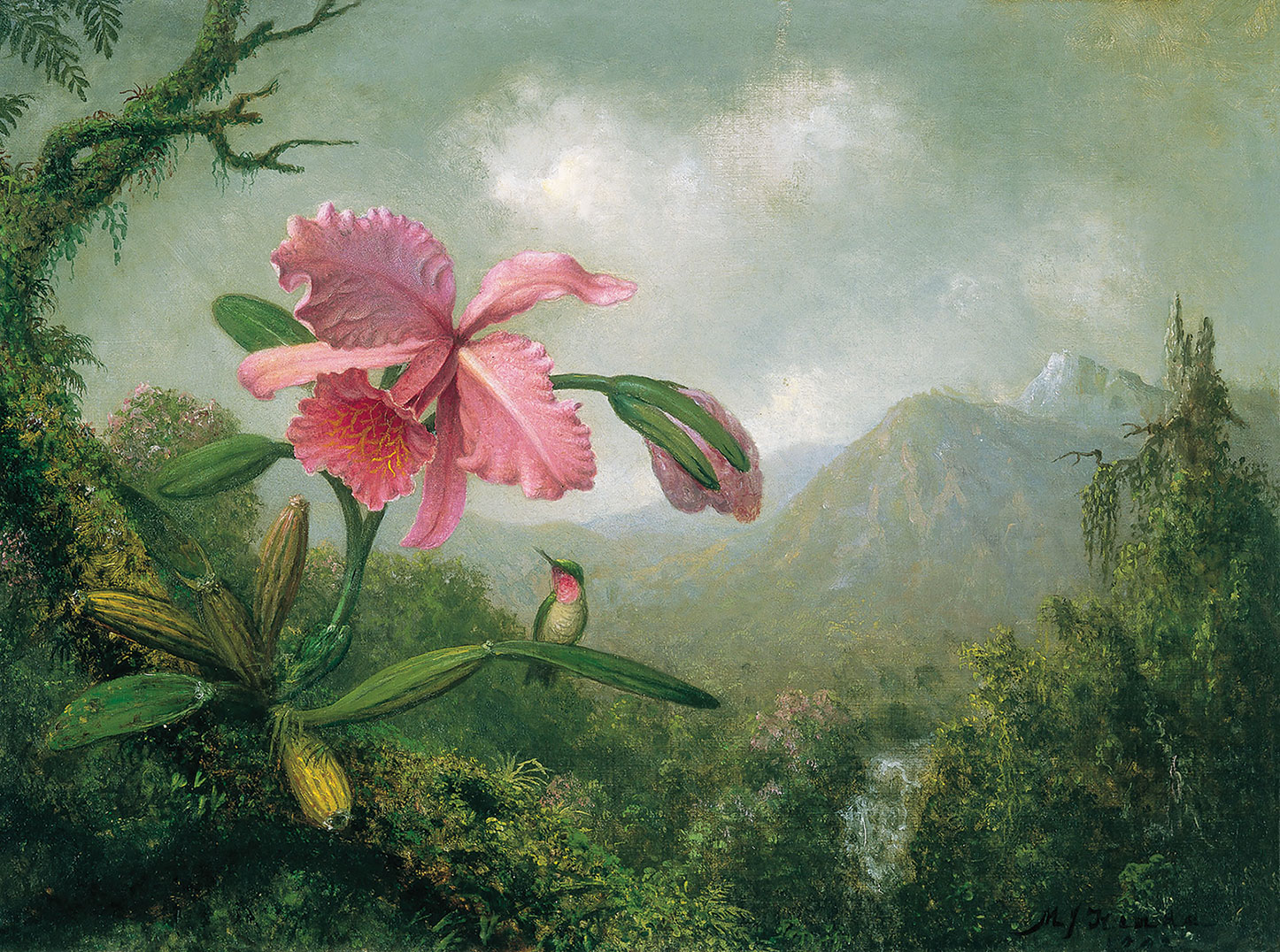
Artist Martin Johnson Heade capitalized on the diminutive size of the hummingbird to make the orchid next to it look like an exotic giant in Orchid and Hummingbird Near a Mountain Waterfall.
The 19th-century American artist Martin Johnson Heade had a talent for evoking strangeness in his subjects. In Orchid and Hummingbird Near a Mountain Waterfall , he capitalized on the diminutive size of the hummingbird to make the orchid next to it look like an exotic giant. The ruby-throated hummingbird, a bird found throughout the Northeastern United States, is shown in its tropical winter sojourn in Central America. To get there, many of these tiny birds fly across the Gulf of Mexico (at 300 wingbeats a minute).
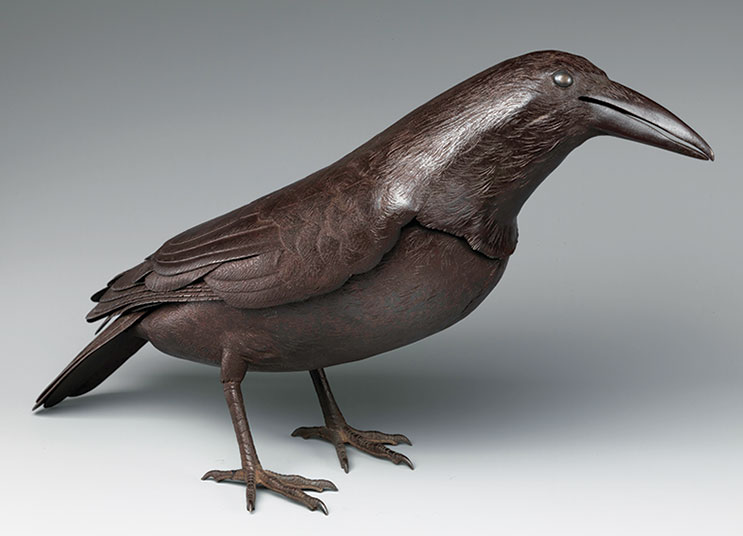
Raven by Japanese artist Myochin Munesuke is from the Edo Period.
Birds fill the sky and the ground in the elegant six-panel folding screen Mynah Birds by an anonymous Japanese artist from the early 17th century. This screen, owned by the Metropolitan Museum of Art, was featured in its 2013 show “Birds in the Art of Japan.” Also from that show is Myochin Munesuke’s Raven from the Edo Period. The 18-inch iron bird stands flatfooted, a biped, like us. It is probably a large-billed crow, a species found across Asia. Crow or raven, it is a bird known for its intelligence. For a vivid demonstration, check out the YouTube video of a crow using a plastic lid to repeatedly slide down a snowy roof.
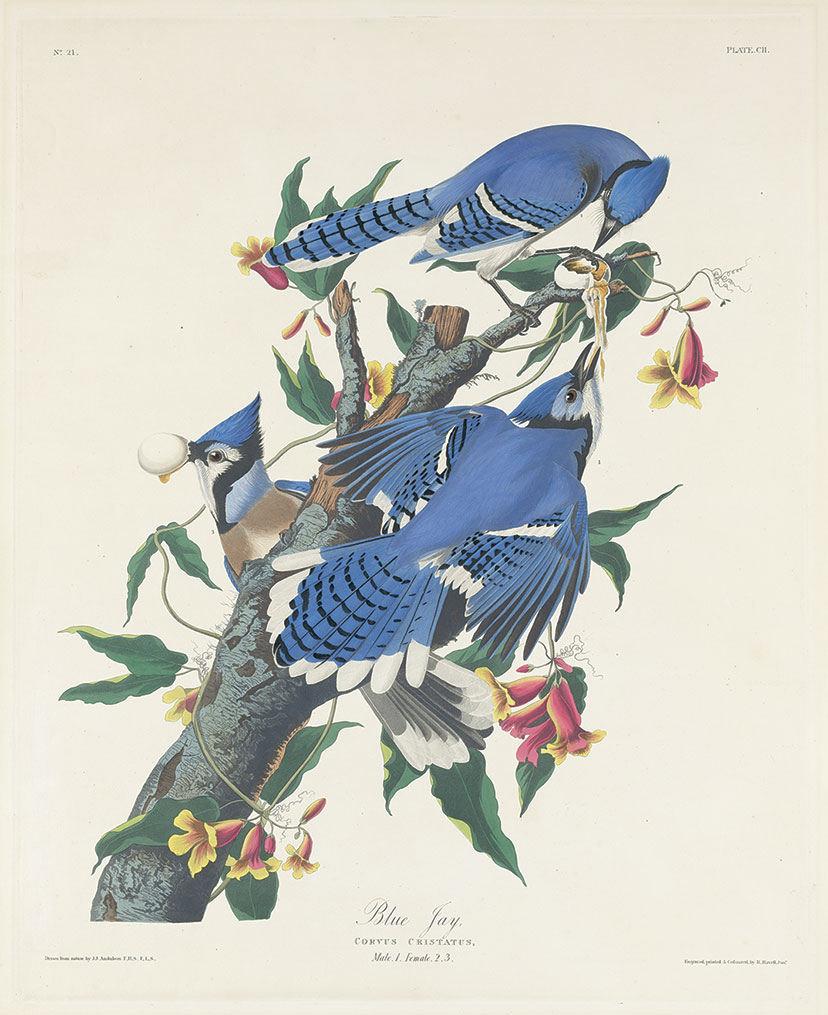
Audubon illustrated the ruthlessness of birds with blue jays plundering eggs from another’s nest.
Despite their wings, birds are not angels. They can be as ruthless or opportunistic as any animal. Audubon’s blue jays, for example, are shown with eggs they have plundered from another’s nest. The bird on the left holds a fully intact egg in its beak, while the other two consume the yolk of a broken one.
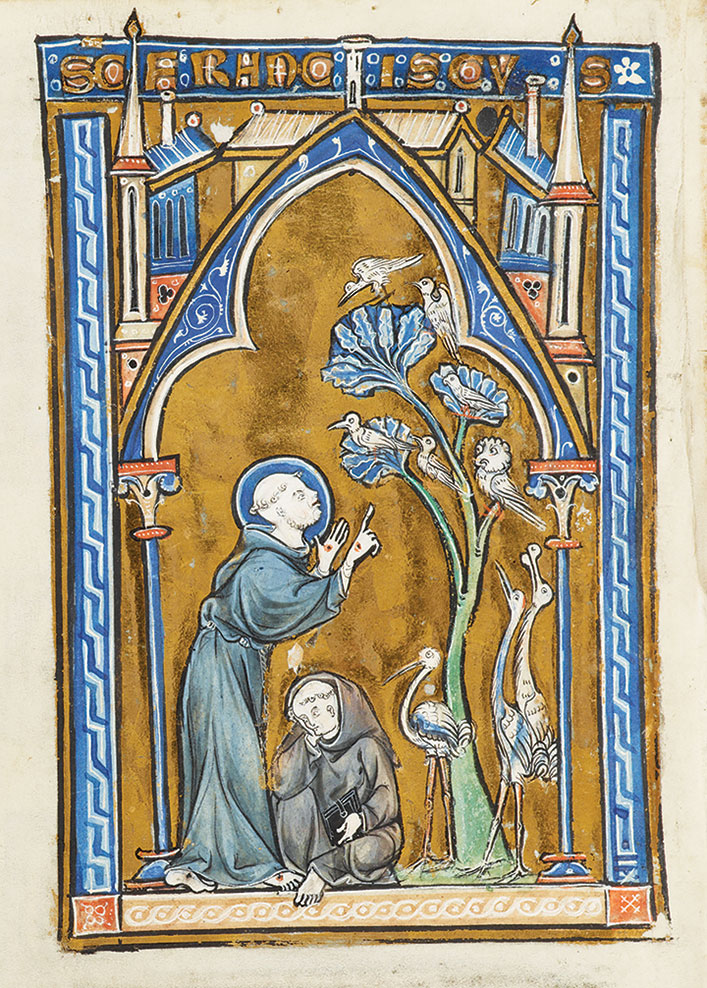
St. Francis of Assisi preaching to an avian audience.
People have always dreamed of living in harmony with the other creatures—a return to the Garden of Eden. One who supposedly did was St. Francis of Assisi, born in 1182. Francis was said to have had a special rapport with animals and is often depicted with a bird on his finger or, as in this miniature from a 13th-century psalter, preaching to an avian audience.
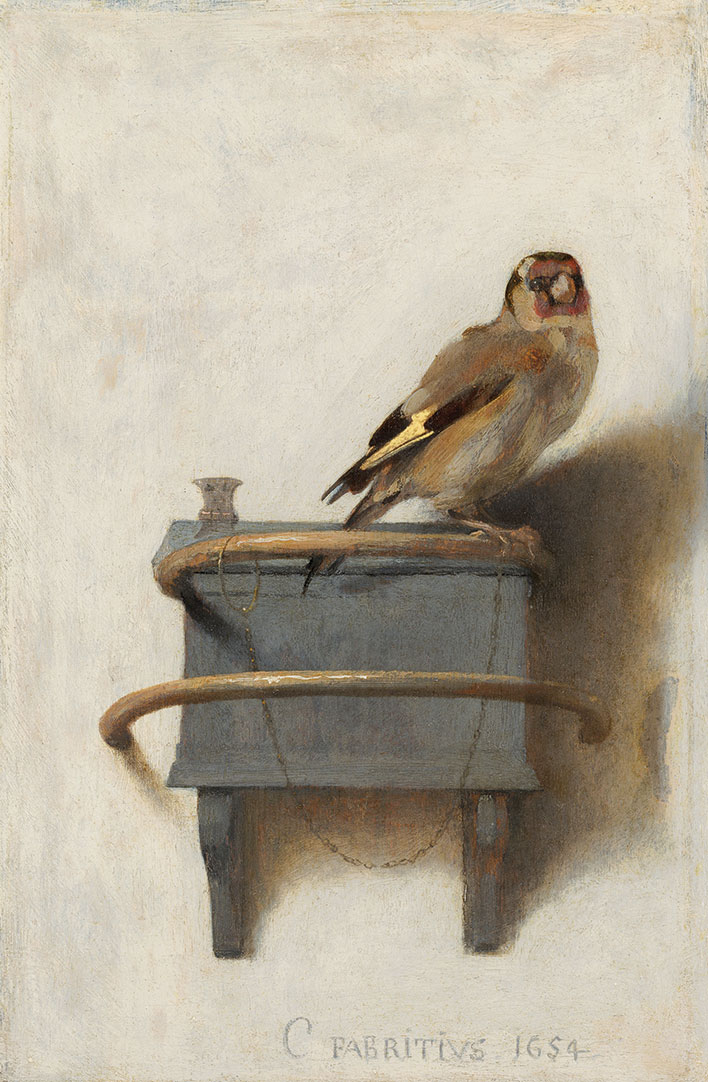
The Goldfinch by Carel Fabritius, a student of Rembrandt, realistically depicts people’s attempts to be close to birds. Showing a European goldfinch chained to a metal perch, it gained much attention when exhibited at the Frick Collection in New York City in 2014 after the publication of a book by the same name by Donna Tartt won a Pulitzer Prize.
The reality of people’s attempts to be close to birds is more sadly and realistically depicted in The Goldfinch by Carel Fabritius, a student of Rembrandt. His small trompe l’oeil work depicts a European goldfinch chained to a metal perch. The painting, owned by the Mauretshuis museum in the Netherlands, gained a popular audience in 2013 with the publication of the book by the same name for which author Donna Tartt won a Pulitzer Prize. Some 200,000 people queued up to see it in an exhibit at the Frick Collection in New York City in 2014.
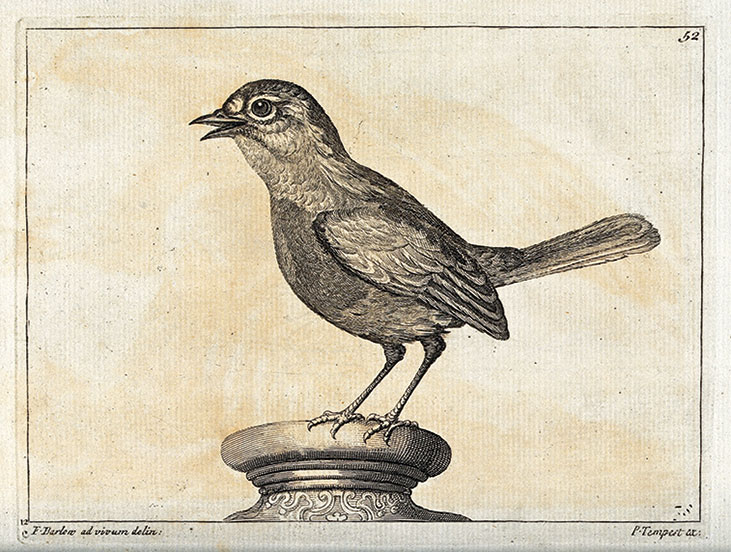
Even the drab sparrow can have charm, as seen in the engraving by Pierce Tempest after a work by Francis Barlow, both of whom lived in the late 17th and early 18th centuries.
No bird is more ordinary than the sparrow. Yet even that drab avian representative can have charm and alertness, as seen in the engraving by Pierce Tempest after a work by Francis Barlow, both of whom lived in the late 17th and early 18th centuries.
Among the birds whose decline is cited in the Science report, are two—the house sparrow and the European starling—that are not native to our continent. Both were introduced in the 19th century and have proved highly invasive and destructive. The house sparrow was imported to deal with a pest—the larvae of the linden moth, which was devouring New York City street trees in the 1850s. It worked, but the house sparrow spread across the continent and became a much bigger pest, eating butterflies, destroying flowers and killing native bird species. The starling was brought here for no practical purpose. One story has it that it was released in Central Park by a Shakespeare lover who wanted every bird in the Bard’s work to be represented here. Starlings have also proved to be destructive pests, despite their enchanting shape-shifting murmurations.
Ecologists might agree that the disappearance of these two invasive species wouldn’t be a tragedy, but the overall drop in the population of even these undesirables has them worried. Like the proverbial canary in the coal mine, birds are an early warning system. They are indicators of environmental health, a sign that earth’s biological systems are in trouble.
The hope is that people will take action, as occurred with eagles and other raptors. For that to happen, of course, birds need human advocates. Artists, even artists from the past, can be part of that effort.
Columnist John Zeaman is a freelance art critic who writes regularly for The Record and Star Ledger newspapers. His reviews of exhibits in New Jersey have garnered awards from the New Jersey Press Association, the Society of Professional Journalists (New Jersey chapter) and the Manhattan-based Society of Silurians, the nation’s oldest press club. He is the author of Dog Walks Man (Lyons Press, September 2010) about art, landscape and dog walking.
